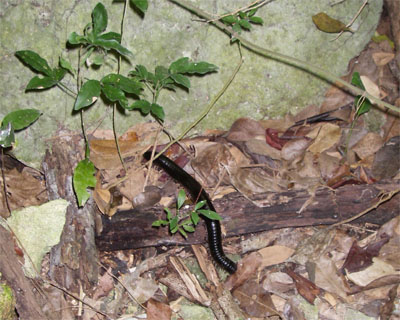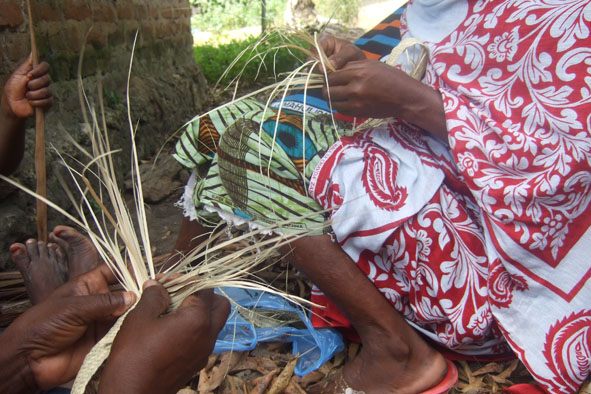Introduction to KIWA project
Zanzibar, tourism and Kiwengwa area 
Lot of European tourists spend their holidays at the beaches of Zanzibar where the hotels and other services are situated. Hotels are mainly owned by multinational companies. Access to the beaches of the hotels can be prohibited from the local people. Sanzibarians have only a few tourism activities of their own and those consist of small-scale sales of souvenirs, spices etc. Therefore they don’t benefit a lot from tourism. However there are lot of tourists in the island, so it would be worthwhile to elaborate that kind of operations that local people would have a chance to earn extra money and that way also they could benefit from tourism.
The problem of Kiwengwa shenia region is the lack of economical resources, which has lead to the unsustainable use of the protected forest in the area. For the protection of the only natural forest on the coral area of Zanzibar the inhabitants should find other sources of income. In the woods of Kiwengwa are located the largest coral caves of Zanzibar . Around the caves there is very rich flora.
Kiwa project
The primary aim of the development co-operation project is to develop new places of employment for the people living in the village. To reach this target a profit making travel destination will be constructed around the Kiwengwa caves. The caves will be equipped with required constructions and in the vicinity of the caves there will be built a nature trail along which the tourists can get to know local traditional plants. In addition there will be established a market place and a garden for the traditional plants. The purpose of the project is also to employ women, because it is often more difficult for them to earn money. Kiwa project takes into consideration the valuable environment of Zanzibar and the project collaborates with the local Forest Committee (Metsähallitus). The purpose of the Kiwa project is to increase both the local people’s and the tourists’ knowledge about the nature.
The purpose of the Kiwa project`s cave is not to become a huge travelling centre but it could offer something unusual for tourists in Sanzibar. Kiwa project`s tourist attraction consists of a cave and a nature trail in the wilderness, but the surrounding nature would be disturbed as little as possible. In that way the tourists would have a chance to experience the genuine nature of the island. There wouldn`t be any accommodation services in connection with this small tourist attraction, but the project could encourage local people to develop these kind of services and make some earnings. In that way the Zanzibarians could learn themselves to benefit from the tourism in the island.
The project would assist Zanzibarians to utilize peoples increasing interest of nature’s condition and ecotourism, and the cave would offer something also for those tourists who are interested in the nature and the island itself. Thus the Kiwa project could show to the locals, that tourism is not only a destroying element in their living space, but they could also profit from it. Sanzibarians don`t have extra capital for example to make these kind of tourist attractions. The beginning is hardest and Kiwa project could help with this. After that the locals would take care of the whole project step by step. Thus the knowledge and financial assistance what Kiwa project offers would only help them to get started.
KIWA participants
Kiwengwa ecotourism project is being realized as a development co-operation between Department of Commercial Crops Fruits and Forestry (DCCFF) from Zanzibar and the geographic society of Turku (GST) from Finland. The prime financier of the project is the Ministry for foreign affairs of Finland. The work contribution of the Finnish participants is completely voluntary. Some of the participants may, though, attach their studies as a section of this undertaking. One of the aims of the project is, however, to activate the habitants of the villages near the resort and enable them to benefit from tourists.
Reports, publications and other materials
Leaflet of the resort
Map of the cave trails
Progress news of the project
Flora Identification Report by Mr. Tahir A. Haji.
Report for Identification of Interesting Features at the Cave sites by Mr. Mwinjuma M. Sallah.
The Mchekeni caves history, culture and geological information study report by Mr. Tahir A. Abbas.
Study report on tourist attractions and willingness to pay by Ms. Maija Hyypiä and Ms. Elina Kasvi, edited by Mr. Tamrini A. Said.
Article about the Kiwengwa caves in Your Travel Choice
Update report on the caves from 2011 (written during LIVE project)
(Please do notice that these reports may not be valid in all the scientifical manners. For example, the species names are mostly translated from swahili language, and thus some misunderstanding may have appeared.)
